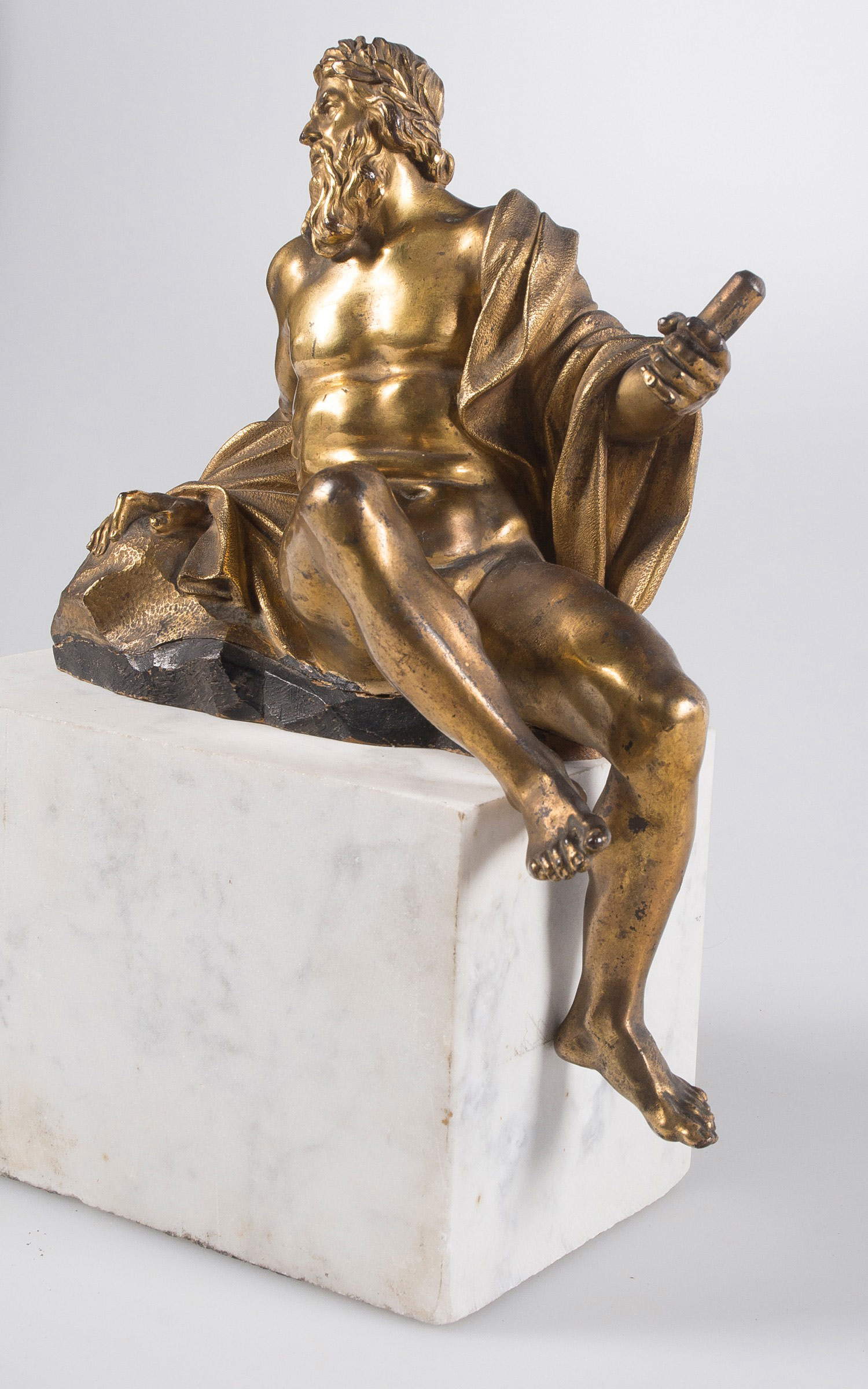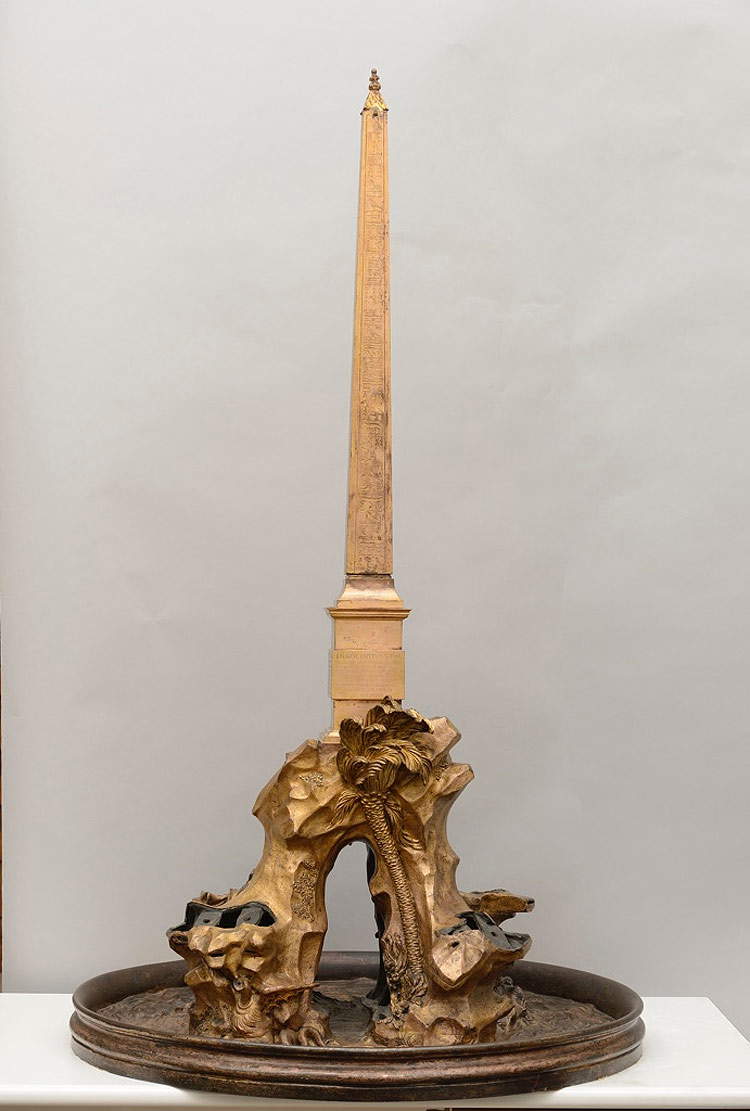In Spain, a case similar to that of theEcce Homo attributed to Caravaggio, which was to go to auction, in a sale of the Ansorena house, and was later withdrawn because of the strong interest aroused by the work, is being repeated. This time the same fate befell a gilded bronze sculpture that was to go to auction last Nov. 25 at the Spanish house La Suite in Barcelona: it was lot 54, estimate 2,000-2,400 euros, a sculpture measuring 17 x 26 x 13 centimeters, presented generically as “Italian school, probably Florence, 17th-18th century,” and identified as a depiction of the god Vulcan. The brief description of the lot states that “our sculpture follows the models of Pietro Simoni da Barga, a sculptor active between 1574 and 1588 in Florence. As an example, the Hercules dated about 1576 preserved at the Metropolitan Museum in New York, with inventory number 64.101.1462, where the model used bears a strong resemblance to our Vulcan.”
What happened? Just an hour before the sale, the Catalan auction house called a potential buyer by phone and explained that the Spanish Ministry of Culture had declared the bronze non-exportable and had withdrawn it in order to study it better. Ministerial sources later told the Europa Press news agency that experts suspect it may be a work by Gian Lorenzo Bernini, and therefore, although there is no certainty, the small sculpture “has been declared non-exportable because it is believed that it may be part of a sculptural group preserved in Spanish public collections.”

 The bronze that was to go on
The bronze that was to go on


The work actually bears a striking resemblance to the personification of the river Ganges in the Fountain of the Four Rivers in Piazza Navona in Rome (the Ganges, in particular, was materially sculpted by Claude Poussin, one of the many artists who collaborated with Bernini on the undertaking). In any case, it is a work of great quality, and there is now speculation that it may be one of the figures that were placed on the bronze model of the fountain, part of which (the obelisk with rocks) is preserved at the Palacio Real in Madrid, and which has been described by Spanish art historian María Jesús Herrero as “an admirable and very important work being one of the few works by Bernini preserved in Spain” (the model is in fact attributed to the great sculptor and his workshop).
In an essay by scholar Miguel Jaramago, dedicated precisely to the model of the Fountain of the Four Rivers preserved in Palacio Real(The Model of the Pamphilius Obelisk of Madrid from an Egyptological Perspective, 2015), the history of the model is reconstructed: “after the erection of the obelisk in the square,” Jaramago explains, “Bernini made many scale copies of the fountain. At least one of these, the one studied in the present article, arrived in Spain during the reign of Philip IV, as a diplomatic gift from the papacy.” Art historian Delfín Rodríguez Ruiz, in his 2014 study, also advanced the date of the model’s arrival in Spain: between 1664 and 1665. “As early as 1668,” Jaramago continues, "it is documented in the king’s private office located in the Torre de Oro of the Real Alcázar in Madrid. Some researchers think that the gift was given by Cardinal Giulio Rospigliosi in 1665 [...]. In 1668, Cosimo III de’ Medici was able to see the model [in Italian in the text, ed.] of Bernini’s fountain in the Alcázar, next to the Apotheosis of Claudius.“ Since then, the work has not moved from Spain, and Bernini’s name as its creator is first documented in 1700, in the will of Charles II (another 1686 inventory passage is recorded, where the name of the work’s executor is not mentioned, but it is stated that the original was by Bernini’s ”caballero"). The small bronze object in the 19th century came to the private library of Isabella II and for some time was perhaps moved to the palace of Aranjuez, and then for a long time traces of it were lost, until it was again identified by Delfín Rodríguez Ruiz. Also dating back to the 19th century should be the mutilation of the work, with the removal of the figures of the four rivers.
Experts will now take the time to study the work. What is certain is that, should it be confirmed that it is a missing piece from the Palacio Real model, the estimate would go way up.
 |
| Spain, blocked sale of 17th-century bronze (estimated 2,000 euros): possibly by Bernini |
Warning: the translation into English of the original Italian article was created using automatic tools. We undertake to review all articles, but we do not guarantee the total absence of inaccuracies in the translation due to the program. You can find the original by clicking on the ITA button. If you find any mistake,please contact us.